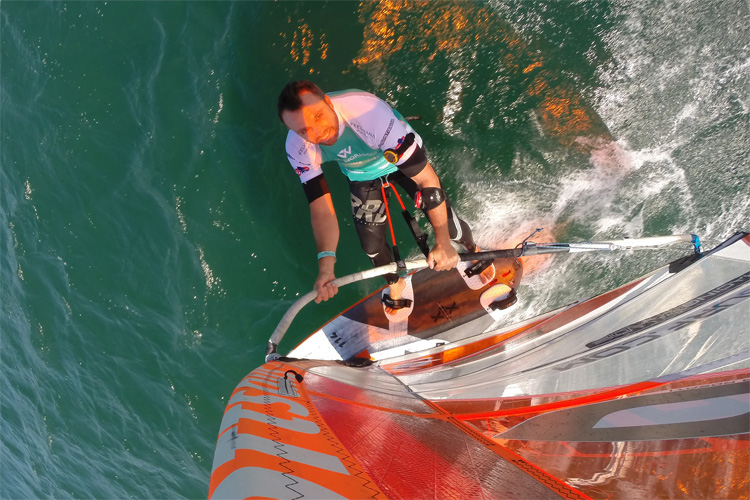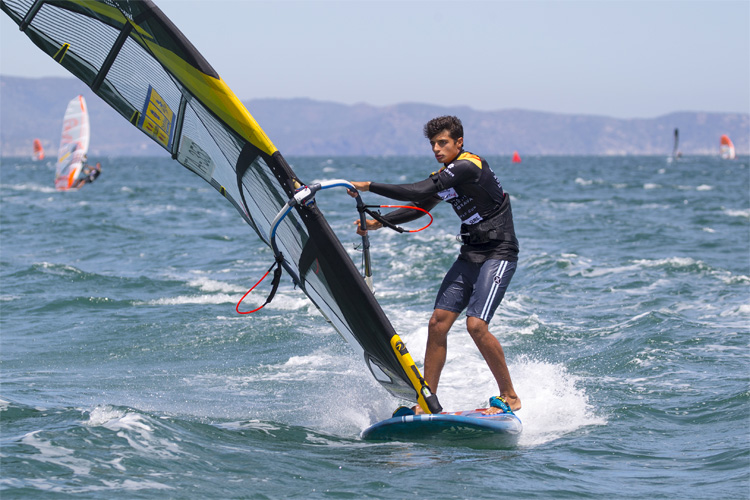Do you need guidance in setting the length and position of your harness lines? Here's how to do it for better windsurfing performances.
In intermediate and advanced windsurfing, sailors often apply their body weight in the harness, rather than arm strength, to counterbalance the wind on the sail.
Once you get acquainted with the harness, it is important to know how to adjust the harness lines to the conditions you're experiencing in the water.
Although the ideal settings vary from windsurfer to windsurfer - personal preferences matter - and depending on the wind conditions and the gear you're using, there are a few basic guidelines you can follow.
Fine-tuning the harness lines is all about adjusting the width (space between hands), the length (from boom to hook), and the position in the boom (forward or backward).
The goal of these subtle changes is to improve your stance and balance while windsurfing.
Harness Line Positioning
The Rule of Hands
There's a general rule of thumb that tells us that for sails between 5 and 7 meters and in marginally powered wind conditions, you should match the number of clenched hands to the sail size.
All you have to do is count them down the front of the boom. For example, if you're sailing with a six-meter sail, count six hands down the boom.
The Rule of Thirds
For powerful wind conditions, you may run a tape measure from the clew of the sail to the middle of the mast and then position the rear harness line fixing one-third of the way down the boom.

The Rig Lift Technique
In a windless area, lift your rig with one or two fingers. If the clew drops, move the lifting point forward toward the mast.
If the boom remains level when you lift, position the harness lines just on either side of this point.
Harness Line Width and Length
The goal is to create a good distance between the boom and your upper body. So, fix the buckles approximately a hand's width apart.
If you're using a seat harness, adjust the lines to elbow-to-wrist width. If you're on a waist harness, make them a little longer, around elbow-to-middle-of-the-palm width.
So, how do you know you're sailing with the ideal harness line setup?
The rig should remain stable with equal pressure on each arm when sailing fully sheeted with both hands over the harness lines.
You'll also notice that the harness lines are too far forward if the back arm feels more pressure or the apex of the line is angled toward the tail, and vice versa.
For more in-depth information on this topic, get "RYA Advanced Windsurfing."
